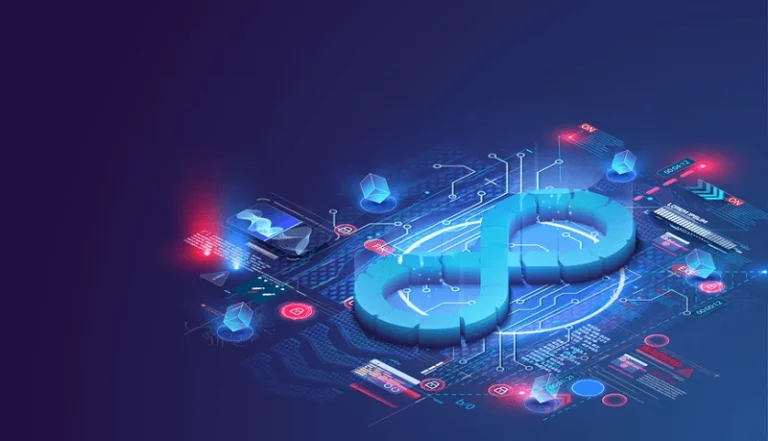At this time, the documentation of all security decisions made in support of the system or application is finalized and variances to the existing security policies and standards are noted. Where variances are permitted on a temporary basis, tracking is initiated to ensure that variances are resolved in accordance with an agreed-upon schedule. The cutover/installation plan documents the transition from an old system or application to a new one. This plan should address any migration of production data that has not been performed.
Possible solutions are offered and examined to find the best fit for the project’s end aim or goals. Whether a system is technical or not, it can gain from the SDLC procedure. A system is basically some sort of information technology like apparatus or freeware. Executives of projects and programs often take part in SDLC, alongside system and system programmers, architect coders, and even prospective users. The project management process should ensure conformance with all aspects of the SDLC.
Advantages and disadvantages of SDLC
This testing and iteration stage is critical to ensure the performance of the system, as sometimes things don’t always go exactly to plan – despite intensive research and analysis! The results of performance testing during this stage can be used to fix any problems that may arise, as well as identify any possible improvements. Effective testing can be the difference between delivering a perfect product that functions for years, and one that immediately malfunctions, potentially causing damage. Projects begin because somebody has either 1) a problem that needs to be solved, or 2) an idea for improving something. In both cases, this person will usually work with a team of people to either solve the problem, or bring their vision to life.
- If followed through from beginning to end, the SDLC will help deploy a fully-operational, high-quality system that meets and/or exceeds client requirements, all within the specified time and budget constraints.
- Without software life cycle models, it becomes tough for software project managers to monitor the progress of the project.
- This swift evolution sparked the beginnings of a production framework that eventually grew into the SDLC we know today.
- During the detailed design phase, once again, information security teams should support the project team’s effort to design the system to achieve the desired solution.
- The big bang model is a high-risk SDLC type that throws most of its resources at development without requiring an in-depth analysis at the start of the cycle.
- The agile methodology produces ongoing release cycles, each featuring small, incremental changes from the previous release.
This article will provide an in-depth analysis of the history, definition, phases, benefits, and disadvantages, along with solutions that support the system development life cycle. In most use cases, it system development life cycle a system is an IT technology such as hardware and software. Project and program managers typically take part in SDLC, along with system and software engineers, development teams and end-users.
Waterfall
Let’s take a close look at every typical phase of an average software development life cycle. Once the system requirements have been clearly defined, an in-depth analysis should be performed in order to determine what functionalities the system must have, and how to best implement them. The aim of this analysis is to consider all possible aspects of the system, and derive the key success factors for its real world implementation. Throughout the analysis stage, the team is looking at how they can improve on existing solutions in an effort to minimise their cost and reduce their development time. With the adoption of faster and newer development life cycles, organizations are moving away from older SDLC models (waterfall, for example). With ever-increasing demands for speed and agility in the development process, automation has played a key role.

Numerous model frameworks can be adapted to fit into the development of software. With this method, you can create a one-of-a-kind product by incorporating consumer feedback from the very beginning of the development process. While there are differences between these SDLC phases, they all aim to help teams provide high-quality software as quickly and cheaply as feasible.
Stage 5: Implement
During this stage of the system lifecycle, subsystems that perform the desired system functions are designed and specified in compliance with the system specification. Interfaces between subsystems are defined, as well as overall test and evaluation requirements.[18] At the completion of this stage, a development specification is produced that is sufficient to perform detailed design and development. Other steps which may appear include project initiation, functional specifications, detailed specifications, evaluation, end-of-life and other steps that can be created by splitting previous steps apart further. Many of these models are shared with the development of software, such as waterfall or agile.

Other SDLC models include rapid application development (RAD), joint application development (JAD), the fountain model, the spiral model, build and fix, and synchronize-and-stabilize. In fact, each organization may develop its own list of tasks, techniques, and (automated) tools, which can be referred to as “their” methodology. The basic fact finding techniques include questionnaires, interviews, observation, and document collection. The synchronize and stabilize method combines the advantages of the spiral model with technology for overseeing and managing source code. This approach was defined by David Yoffie of Harvard University and Michael Cusumano of MIT. They studied how Microsoft Corp. developed Internet Explorer and Netscape Communications Corp. developed Communicator, finding common threads in the ways the two companies worked.
What is the system development life cycle?
The best method for ensuring that all tests are run regularly and reliably, is to implement automated testing. “Let’s get this closer to what we want.” The plan almost never turns out perfect when it meets reality. Further, as conditions in the real world change, we need to update and advance the software to match. For example, define a nomenclature for files or define a variable naming style such as camelCase. This will help your team to produce organized and consistent code that is easier to understand but also to test during the next phase. This article will explain how SDLC works, dive deeper in each of the phases, and provide you with examples to get a better understanding of each phase.
The iterative incremental model requires the team to quickly deploy an incomplete version of the software at the end of each development cycle. Companies opt for this model to get valuable early feedback from customers. Users offer input on the prototype, developers implement the requested changes, and the team creates a better version of the prototype.
Add-On Services
It is similar to the Waterfall model with the addition of comprehensive parallel testing during the early stages of the SDLC process. Once the product is ready to go, it’s time to make it available to its end users and deploy it to the production environment. Developers will typically use multiple tools, programming environments, and languages (C++, https://www.globalcloudteam.com/ PHP, Python, and others), all of which will comply with the project specifications and requirements outlined in the SRS document. Special attention has been given to the characteristics of each of the seven SDLC phases because a thorough understanding of these different stages is required to implement both new and modified software systems.

For example, both companies did a nightly compilation (called a build) of the entire project, bringing together all the current components. They established release dates and expended considerable effort to stabilize the code before it was released. At some point before each release, specifications would be frozen and the remaining time spent on fixing bugs. In order to understand the concept of system development life cycle, we must first define a system. A system is any information technology component – hardware, software, or a combination of the two. Each system goes through a development life cycle from initial planning through to disposition.
History and Origin of the System Development Lifecycle
There’s a distinct plan for each phase that builds on what was learned in earlier phases. QA specialists perform system integration and testing in the fifth stage. They will have to evaluate the proposed layout to see if it helps the company achieve its primary objectives. End users can discuss and identify their application business information needs.
